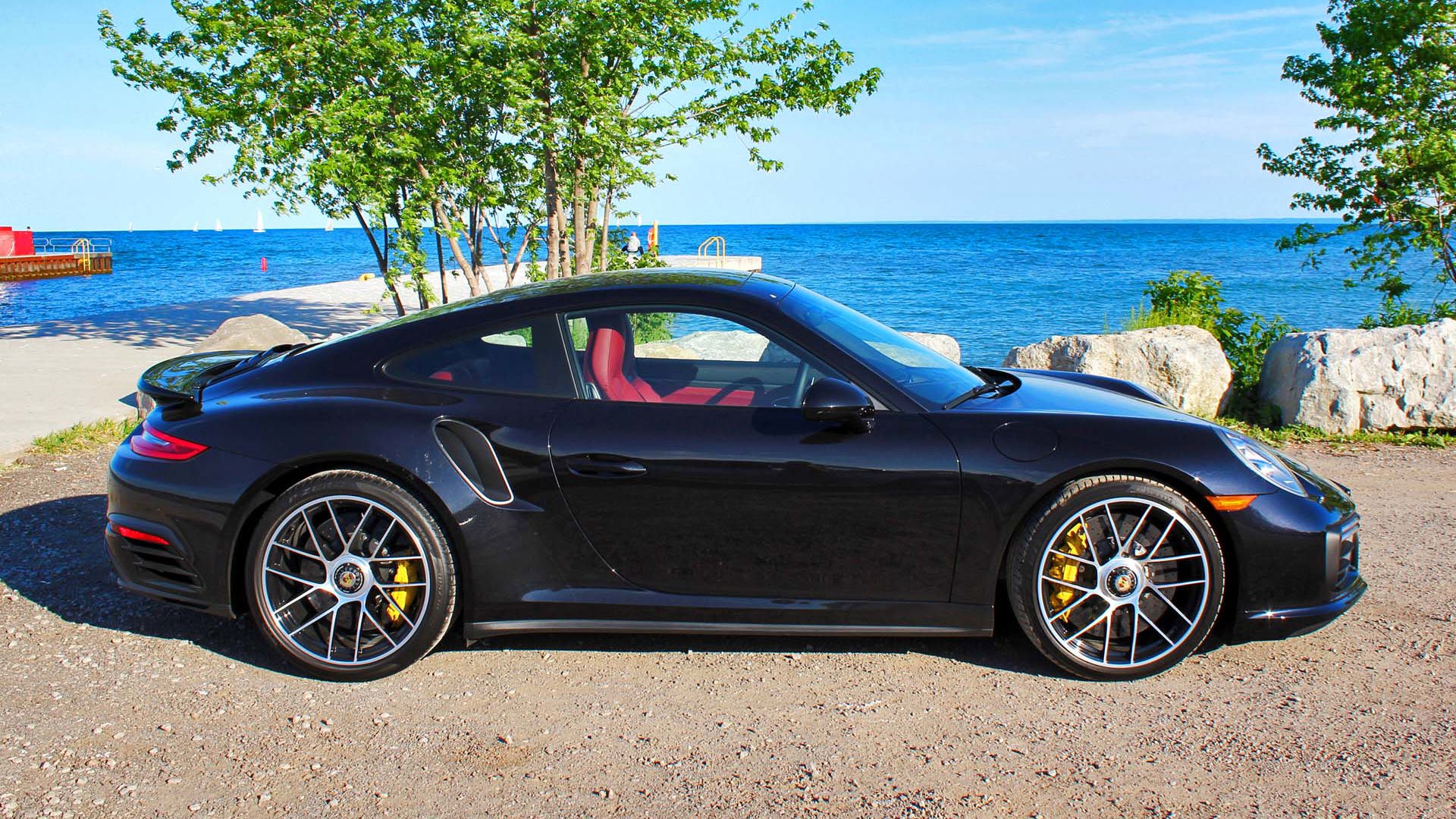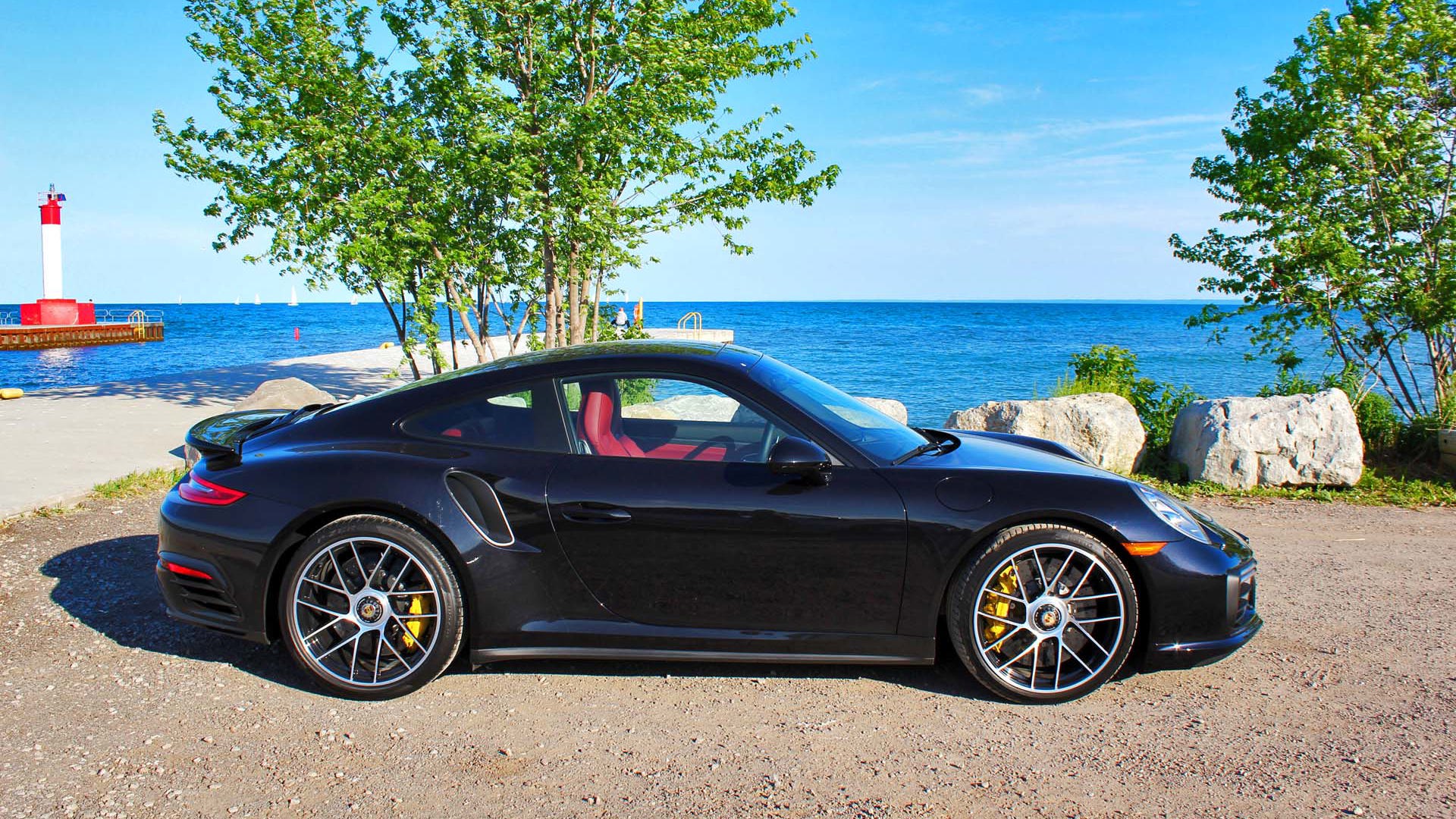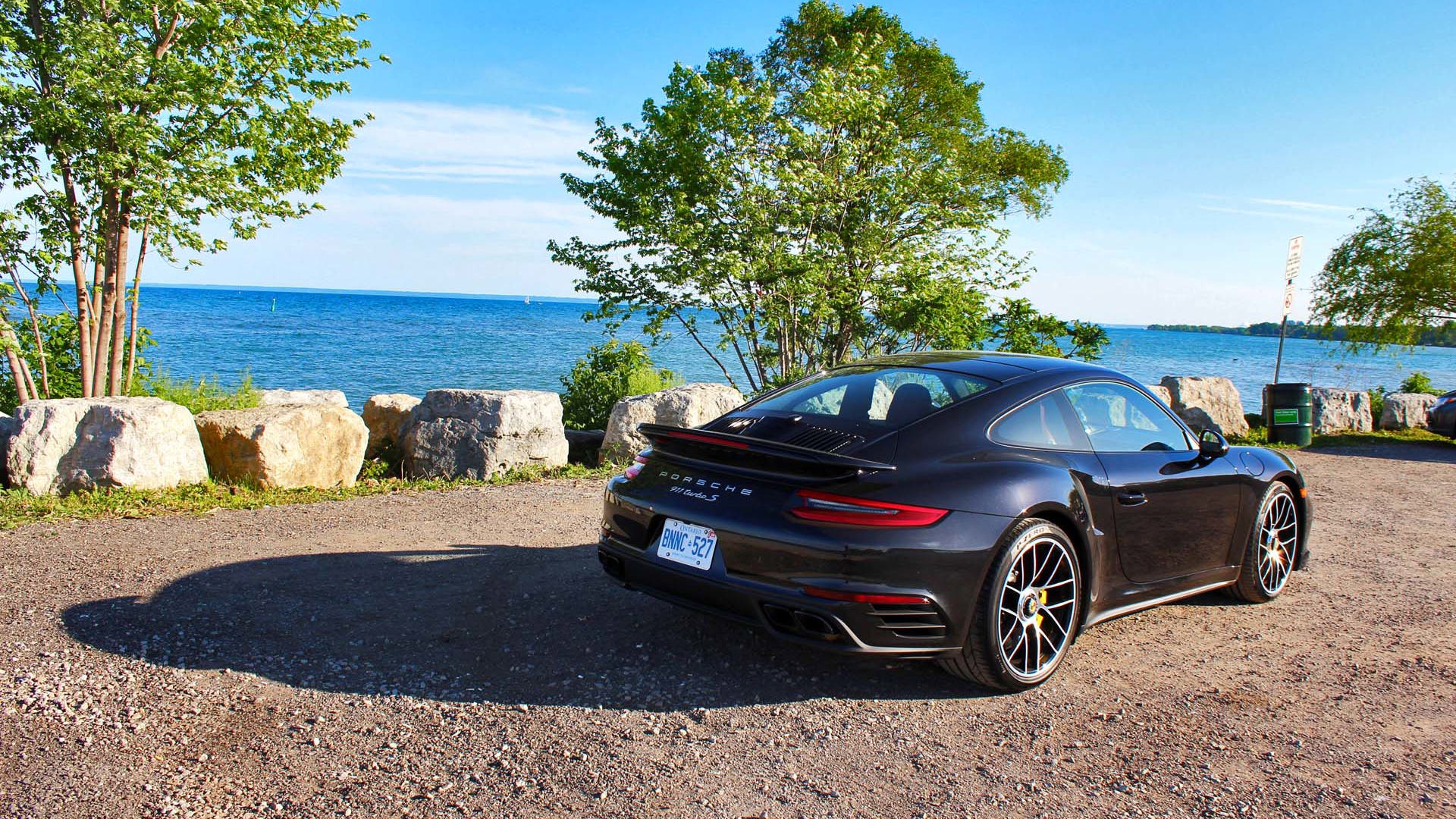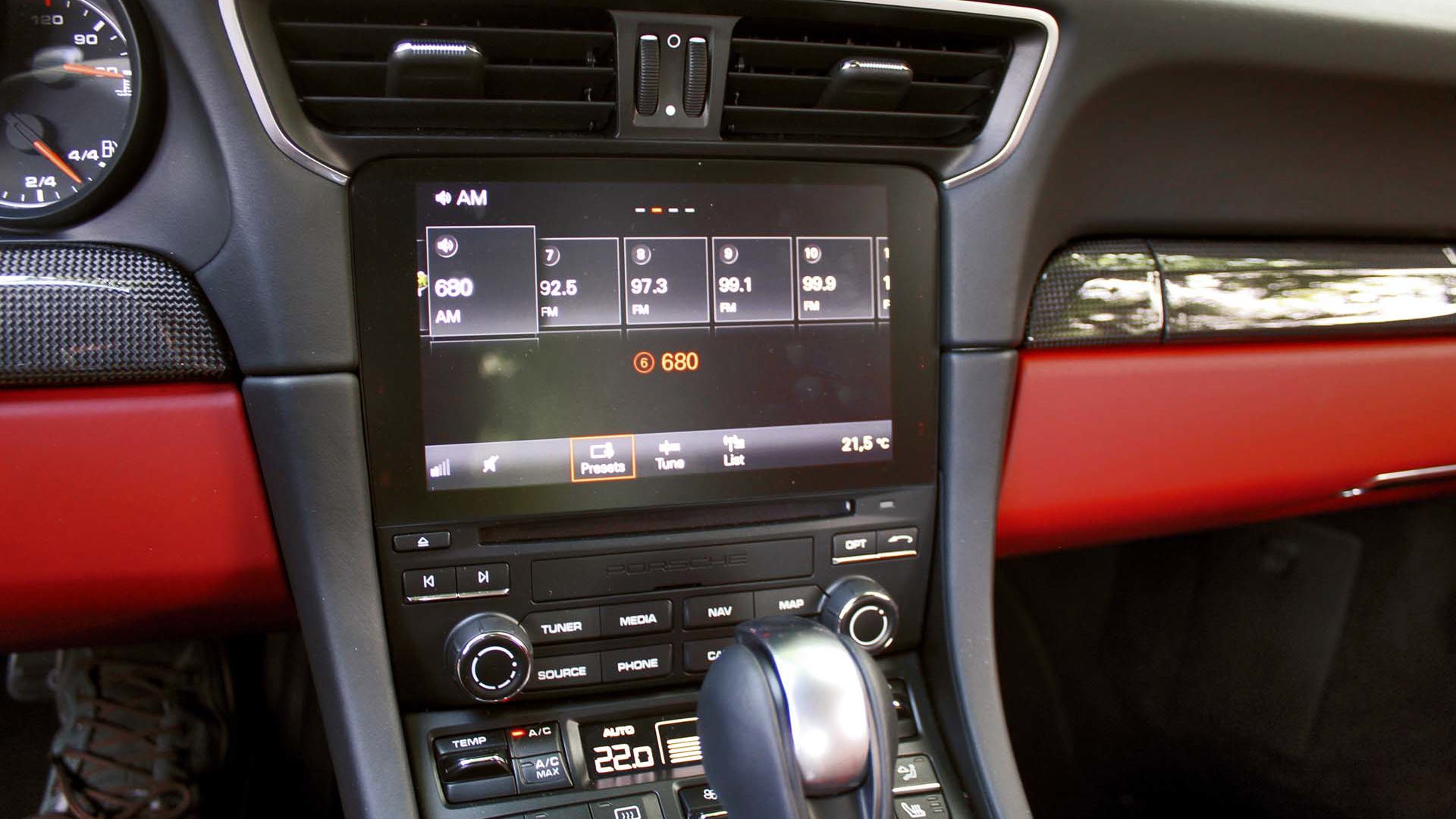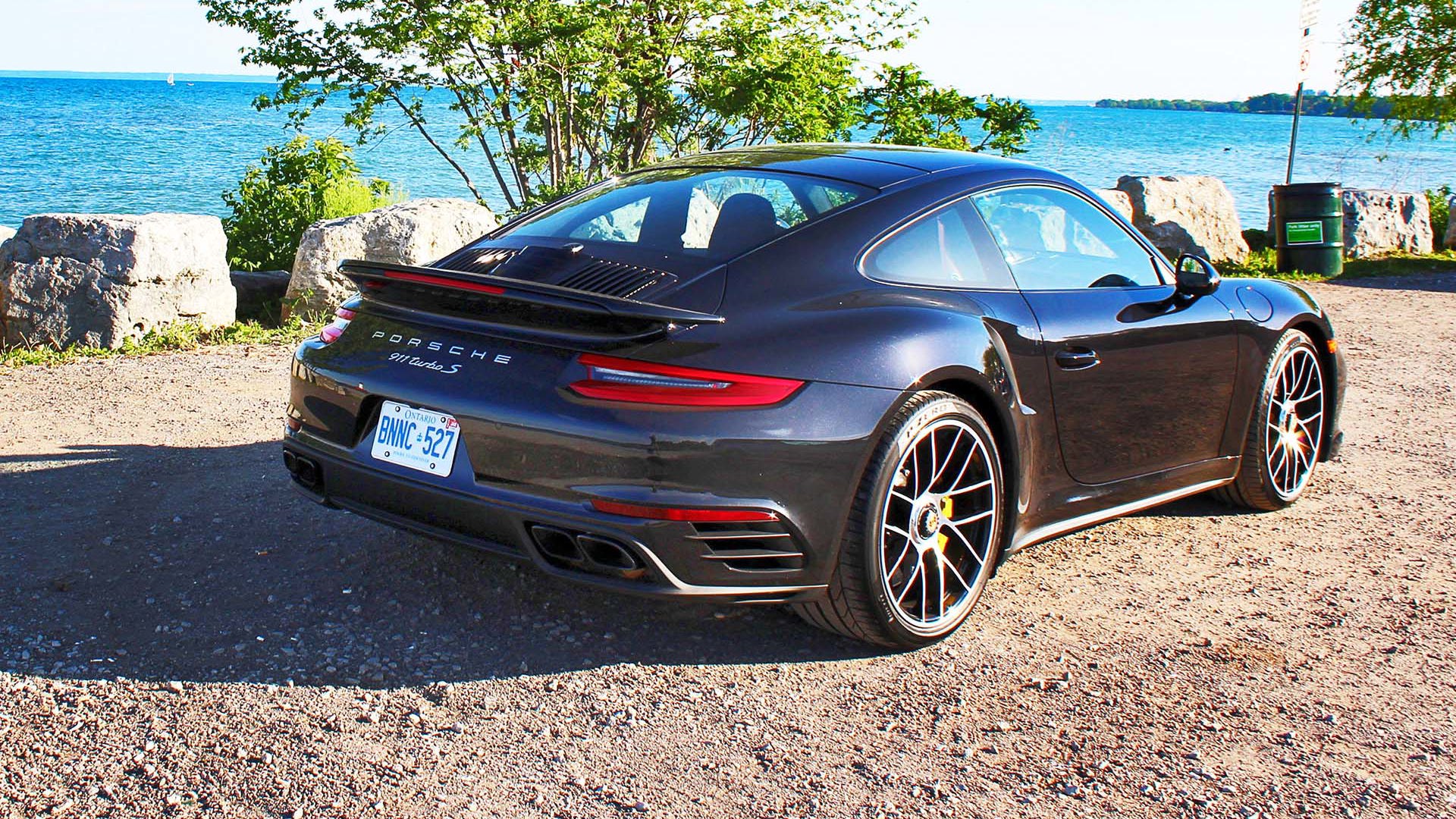 AutoTrader SCORE
AutoTrader SCORE
-
EXTERIOR STYLING9/10
-
INTERIOR8/10
-
PERFORMANCE9/10
-
COMFORT7/10
-
FUEL ECONOMY7/10
There’s so much more to the 2017 Porsche 911 Turbo S than its ability to compress your eyeballs into wee-bitty pancakes while inspiring expletives that would make a Russian sailor blush, but such is the ridiculous level of linear g-forces this all-wheel-drive projectile can inflict upon flesh-and-blood humans, once strapped within its leather-lined environs.
Now, I’ve never piloted a Bugatti Veyron, but I have driven a Lamborghini Aventador, Lamborghini Huracán, Mercedes SLS AMG, Audi R8 Plus, Challenger Hellcat and McLaren 570S, and the Porsche 911 Turbo S is the only one that gives me “launch” vertigo.
Say hell-oh to Launch Control.
And it’s so easy a monkey could do it. No obtuse sequence of button pushing or secret codes required. Simply turn the little drive mode select knob on the steering wheel to Sport Plus, push both feet hard to the floor (note: ensure there is a pedal beneath each one), grip the steering wheel, clench sphincter, then lift left foot off the corresponding pedal (that would be the brake if you followed Step 2 correctly).
Before you can say “Holy F…!” you’ve passed 100 km/h and are well on the way to prison. Or to the underwear rack at Winners if you didn’t follow Step 4.
Now, I’ve never piloted a Bugatti Veyron, but I have driven a Lamborghini Aventador, Lamborghini Huracán, Mercedes SLS AMG, Audi R8 Plus, Challenger Hellcat and McLaren 570S, and the Porsche 911 Turbo S is the only one that gives me “launch” vertigo.
And of course, being a Porsche, it is engineered to do this all day long if one so desires. The main ingredients here are a rear-mounted 3.8L aluminum direct-injected twin-turbo flat-six that delivers 580 hp and 553 lb-ft from 2,100 rpm, a seven-speed PDK dual-clutch gearbox, all-wheel drive and an inherently brainy management system that directs torque and allows just enough wheelspin for consistent, sub-three-second hole-shot blasts.
An astounding engineering feat in itself.
Okay, we got that out of the way. So what is the 2017 Porsche 911 Turbo S like to drive day-to-day? A breeze. Unlike some of the more high-strung entrants in the junior supercar segment (McLaren 570S, Lambo Huracán), the Turbo S can be as benign as a Civic when tooling about town.
In normal mode the drivetrain is smooth as silk, and while the adaptively damped ride still shows some of that classic 911 clunkiness, it is still reasonably civilized. And lo-and-behold, on relaxed highway touring the mighty Porsche turns in near-economy-car fuel mileage.
At $214,800 the 2017 911 Turbo S is pricey, yet considering its capabilities, blue-chip cred, bulletproof build, and all-year functionality paired with near-humane back seats, it’s the runaway left-brain choice in this rarefied segment.
Although who buys supercars with their left brains? Isn’t this all about passion? If you dared level any criticism at Porsche’s über street 911, it would be that it is a bit too aloof. It effortlessly conquers every challenge with a shrug and hiss of tortured air. To the intoxicating wail of the Audi R8 Plus’ 5.2L V12, the Turbo S sounds like an atomic vacuum cleaner.
Indeed, one could argue the Turbo S lacks soul, but the numbers don’t lie. This car delivers a turn of speed like few others, and it does so with uncommon accessibility. It’s secure, surefooted, and while its limits are far beyond anything mere mortals can approach (especially on public roads), no matter how hard you dare push, the Turbo S never feels like it’s trying to kill you.
If you want more soul and daring in your 911, go for the $200,700 GT3 RS or $211,000 911 R (if you can find one).
In lock step with the lesser 911s that saw big changes for the 2017 model year, the Turbo S gets new headlights and taillights, freshened front fascia and vertical strakes on the engine cover.
Inside we see Porsche’s new infotainment system with its larger touchscreen, Apple CarPlay and pinch and swipe functions. This is a huge improvement over the previous antediluvian affair. We also welcome the ergonomically successful drive mode selector that lives at 4 o’clock within the lovely 918-style steering wheels. Much better than the outgoing fussy buttons found (with difficulty) on the console, it is now very easy to switch between Normal, Sport, Sport Plus and Individual while on the move. Each stetting has a preordained influence on throttle response, transmission mapping, stability and traction control, adaptive damping, active aerodynamic aids, auto start/stop and PDCC adjustable anti-roll bars. Individual allows for a custom dynamic cocktail.
In the centre of this controller is the Sport Response button. Pressing this nets a 20-second burst of full attack mode for those times when the Turbo’s “regular” performance just isn’t enough. Presumably when being bothered by a pesky Lambo or McLaren.
For 2017, the 3.8L flat-six in the Turbo S receives new turbos with larger impeller wheels, increased fuel pressure and reworked intake ports. Porsche claims a top speed of 330 km/h, which is up 11 km/h from last year.
The Turbo S gets standard carbon ceramic brakes, 20-inch centre-lock forged alloys shod with 245/35ZR20 front and 305/30ZR20 rear, dynamic engine mounts, rear-wheel steering, Porsche Torque Vectoring Plus along with the aforementioned adaptive damping and active roll bars.
A whack of sensors, servos, computers and hydraulics blend all this mechanical wizardry into seamless speed, be it in a straight line or something more challenging and interesting. In Sport Plus, the Turbo S feels ferocious – flip the paddles, feel the shifts slam home and revel in the downshift throttle blips. The car feels like it’s planted a few millimeters below the surface of the road, such is its tenacious grip on terra firma and the way it slingshots out of bends.
You really do feel like a hero, but what you don’t feel are all those marvelous systems doing their marvelous things. It’s just you and this incredible machine.
No surprise, my tester sported a few optional goodies, as all Porsches tend to do. Seat ventilation runs $960, and adaptive cruise with collision mitigation braking adds $2,850. Factor in front lift system ($2,960), Burmester audio ($4,230), sunroof ($1,700), lane change assist ($970) and a few other doo-dads and we’re looking at a sticker just north of 230 large.
There’s no other car on the planet like the Turbo S. Think of it as the ultimate expression of a grand touring 911. It’s insanely fast, brags enough technology to keep the International Space Station aloft and does a mighty fine impersonation of a luxury car (sans the cushy ride). Plus, it is built to the highest standards – it comes across as being one hundred percent bomb-proof. For those who can afford it, the 2017 Porsche 911 Turbo S will be worth every penny, and very likely the cheapest way to give your friends launch vertigo.
| Model Tested | 2017 Porsche 911 Turbo S |
|---|---|
| Base Price | $214,800 |
| A/C Tax | $100 |
| Destination Fee | $1,095 |
| Price as Tested | $231,505 |
|
Optional Equipment
Seat ventilation $960; adaptive cruise with Porsche Active Safe $2,850; Light Design Package $590; Porsche Entry and Drive $1,250; Front Axle Lift System $2,960; Burmester audio $4,230; Lane Change Assist $970; sunroof $1,700
|
|
